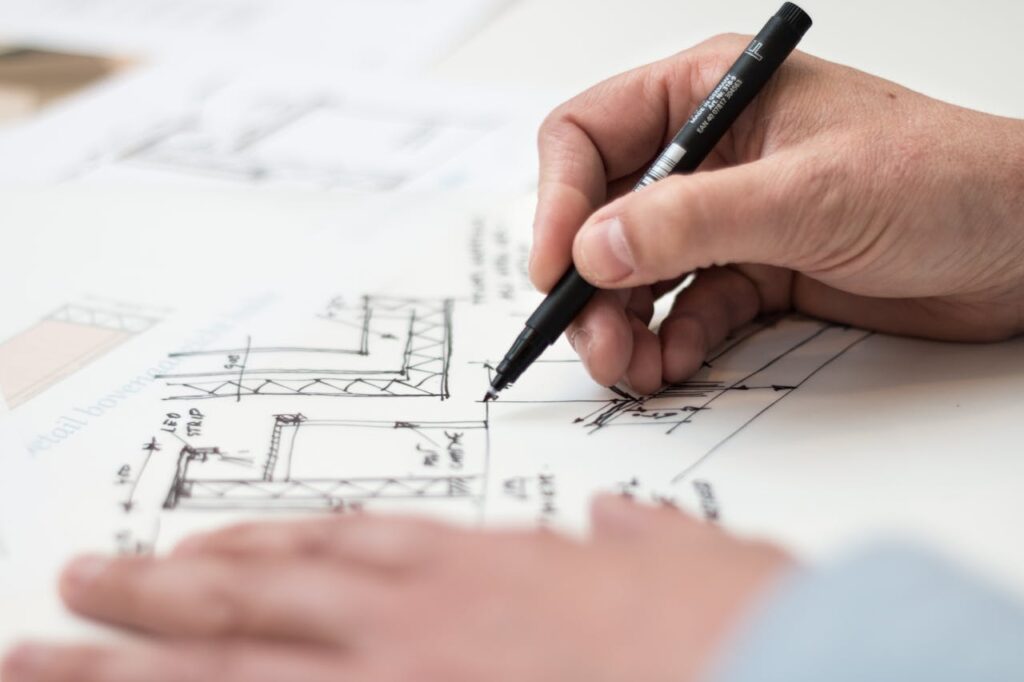There is a peculiar rhythm in the way walls rise, how foundations extend, and how ceilings quietly shelter—an architecture not of grandeur but of necessity, desire, and memory. A family home is less a structure and more a vessel that carries fragments of everyday life. The act of building one is not simply about concrete, beams, and measured layouts; it is about orchestrating comfort and belonging.
The Narrative of Shelter
Families rarely think in blueprints. They think in feelings—sunlight through a kitchen window, the muffled footsteps on wood at night, the hum of rain against a roof that feels protective. Architecture translates those subtle emotions into form. A corridor ceases to be a corridor when a child’s laughter echoes down its length. A living room stops being a square and instead becomes a gathering stage where lives intersect.
The challenge, then, is how builders and architects embed these intangibles into brick and mortar. Functionality alone will not suffice. Beauty alone will not sustain. A family home is the merging point of durability, adaptability, and emotional resonance.
Memory-Infused Design
Not every wall needs to be straight, not every floor plan needs to impress. What matters is how memory settles into the design. Homes built with awareness of family cycles—births, growth, aging, gatherings—carry within them the flexibility to shift. Rooms that can convert, open spaces that can absorb change, small nooks that preserve intimacy—these are the understated but powerful architectural decisions.
A kitchen counter doubling as a homework desk. A backyard fence standing not only as boundary but as canvas for chalk art. Stairs with edges smoothed by the passage of years. The architect is, in a way, designing for memory itself.
Between Tradition and Modernity
Family homes often stand at a crossroads. One path leads back to traditional forms—courtyards, porches, shaded verandas—that echo older ways of life. The other ventures forward into modernist openness, minimalism, technology-infused living. The balancing act is delicate. Too much tradition and the home risks rigidity; too much modernity and it loses warmth.
Blending becomes the quiet art: reclaimed wood beams paired with sleek glass panels, natural ventilation supported by hidden smart systems, a hearth that feels both ancestral and contemporary. In this layering, families locate themselves, neither bound by nostalgia nor consumed by novelty.
Essentials of Family-Oriented Architecture (List One)
There are practical elements that, regardless of style, contribute significantly to the endurance of family homes. Some of these include:
- Flexible Layouts – Open-plan areas that can be subdivided or merged as family needs evolve.
- Durability of Materials – Flooring and surfaces chosen for resilience against spills, scratches, and constant use.
- Natural Light Access – Windows positioned to ensure health and warmth across seasons.
- Outdoor Connection – Patios, gardens, or even small balconies to bridge nature and home life.
- Storage Integration – Built-in cupboards and hidden compartments reducing clutter and increasing functionality.
The list is utilitarian, yet its implications extend beyond function; each point is a channel through which daily comfort flows.
Building as a Timeline
What makes a family home extraordinary is not its first day of completion but how it grows old gracefully. A house is rarely static. Children’s rooms shift into study spaces, play areas become meditation corners, basements evolve into workshops. Architecture must anticipate this elasticity, embedding options rather than rigid solutions.
Consider walls designed to bear future expansions, or foundations strong enough to hold additional stories. These decisions save families from the disruption of radical overhauls later. Good architecture is not about perfection at the start but about endurance through decades.
Intersections of Community and Privacy
A house does not exist in isolation. Streets, neighborhoods, landscapes—all exert influence. Families often seek privacy yet want community. Architects mediate this paradox through boundary walls that don’t alienate, through front yards that allow interaction without intrusion, through fenestration patterns that admit light but shield visibility.
The dialogue between inside and outside is delicate. A poorly designed interface suffocates either privacy or openness. A skillful one lets both coexist.
Philosophies in Construction
When families embark on building, philosophies whisper behind the bricks. Some insist on sustainability—rainwater harvesting, solar orientation, recycled materials. Others prioritize aesthetics—clean lines, textures, the artistic arrangement of volumes. Many prioritize budget, navigating what is affordable while still dignified. Each choice shapes not just a structure but a statement of values.
Architecture, in this sense, becomes autobiography written in materials.
The Poetics of Scale
Scale in a family home differs from commercial or monumental architecture. The proportion of a child’s reach, the comfort of a grandmother’s walk, the visibility from a parent’s line of sight—all matter. Designing stairs too steep or counters too high erases the inclusivity that defines a family dwelling. True scale honors every inhabitant equally.
Material Narratives (List Two)
When selecting materials, families encounter stories embedded within them:
- Brick – Earthbound, traditional, resonant with warmth.
- Concrete – Modern, austere, carrying strength and permanence.
- Wood – Organic, variable, connecting indoors to forests beyond.
- Glass – Transparent, fragile yet liberating in openness.
- Stone – Timeless, textured, grounding structures into the landscape.
Each material choice alters the emotional atmosphere. Beyond budgets and durability, families are choosing what narrative they wish their home to tell.
Architecture as Emotional Infrastructure
While urban planners speak of infrastructure in terms of bridges and roads, families live within an emotional infrastructure—the architecture of intimacy, memory, and togetherness. Hallways are arteries of connection, rooms are chambers of privacy, windows are eyes gazing outward.
A home failing to embody this becomes an empty shell regardless of how expensive or stylish it may be. Conversely, even modest homes, when carefully shaped, throb with vitality because their architecture recognizes emotion as valid currency.
Closing Frames
At its heart, family home building is not an isolated act but a collaboration between lives and structures. Architects lend skill, builders bring craft, but families infuse it with pulse. Over time, walls may crack, paint may peel, yet the essence remains: a container that has carried generations, moments, and transitions.
Architecture in this intimate dimension is less about the skyline and more about the heartbeat. And in that, it fulfills its deepest purpose.








Leave a Reply